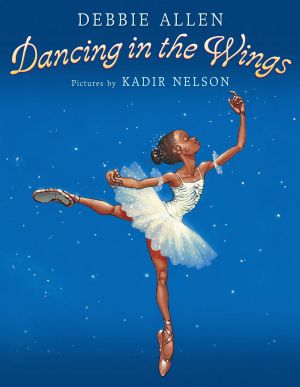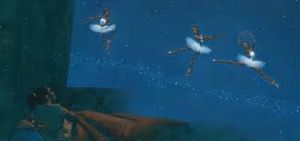Dancing in the Wings by Debbie Allen
Dancing in the Wings was written by Debbie Allen.
After read Dancing in the Wings put on some music and have a dance party together! Play different styles of music and practice different styles of dancing. Try some classical and ballet like Sassy, or some pop and freestyle, also find music that has instructions while dance like the Cha Cha Slide. Enjoy! [1]
Summary
This story tells about a young girl named Sassy. She is a long-legged girl who always speaks out about what's on her mind. her dream is to be a ballerina more than anything, but she doesn't feel confidence because she has too-large feet, too-long legs, and even her big mouth will keep her from her dream. When a famous director comes to visit her classroom, Sassy does her best to get his attention with her high jumps and bright leotard. Her first attempts are definitely not appreciated, but with Sassy’s persistence, she just might be able to win him over. Dancing in the Wings is loosely based on actress or choreographer Debbie Allen’s own experiences as a young dancer. [2]
Pros
On one of online site somebody gave her thought about this book. She said that she really enjoyed the dynamic of that Allen made in allowing children to realize that who they are and what they look like physically shouldn't stop them from achieving their dreams and goals.
It was fascinating and rewarding to watch the main character develop such an appreciation for herself and for ballet. It's also nice to see a black girl dancing ballet and participating in an activity where POC are a minority. [3]
Halee as a verified reader spoke out about this book. She explained that it was one of her childhood favorite books. It follows a young African American girl who is struggling to follow her dreams in becoming a ballerina. She continued, this book would be a problem solving book. This would be a book she would use for teaching in 1st-3rd grade. She would read the book in increments so the children could stop, dialogue and problem solve through the book. There would be crucial stopping points where she would split students in group and they would have a set of questions as guiding points to help them come up with a solution and what they would do if they were in the characters position. [4]
References
- ↑ https://www.raisingareader.org/2017/03/31/dancing-in-the-wings/
- ↑ https://www.penguinrandomhouse.com/books/291836/dancing-in-the-wings-by-debbie-allen-illustrated-by-kadir-nelson/
- ↑ https://www.goodreads.com/book/show/1324917.Dancing_in_the_Wings
- ↑ https://www.goodreads.com/book/show/1324917.Dancing_in_the_Wings

